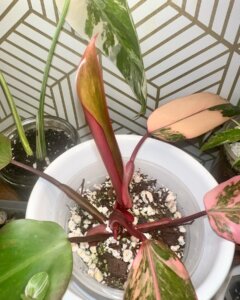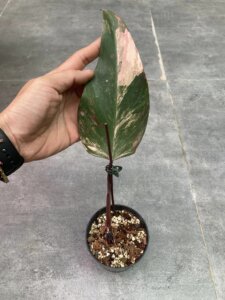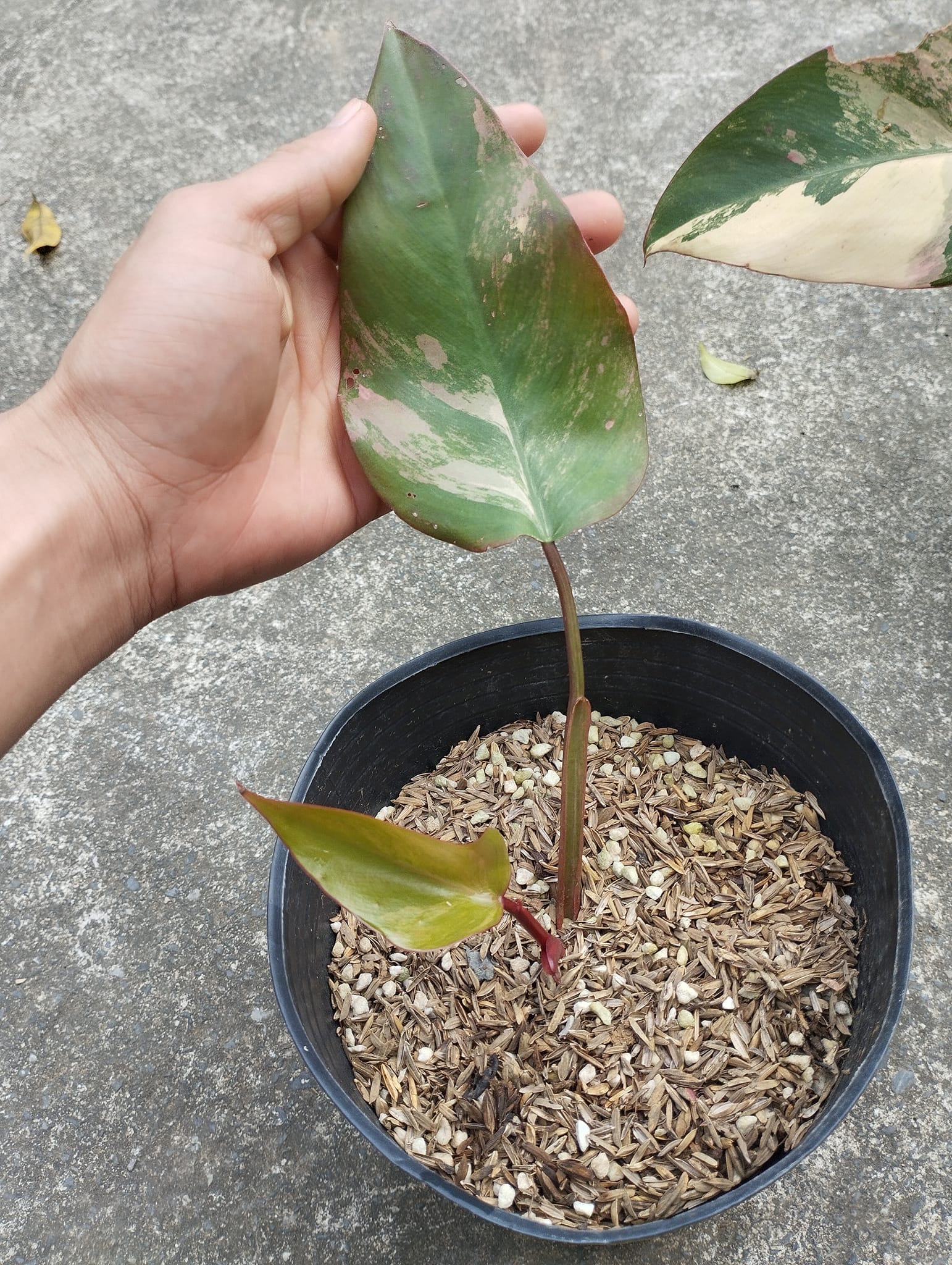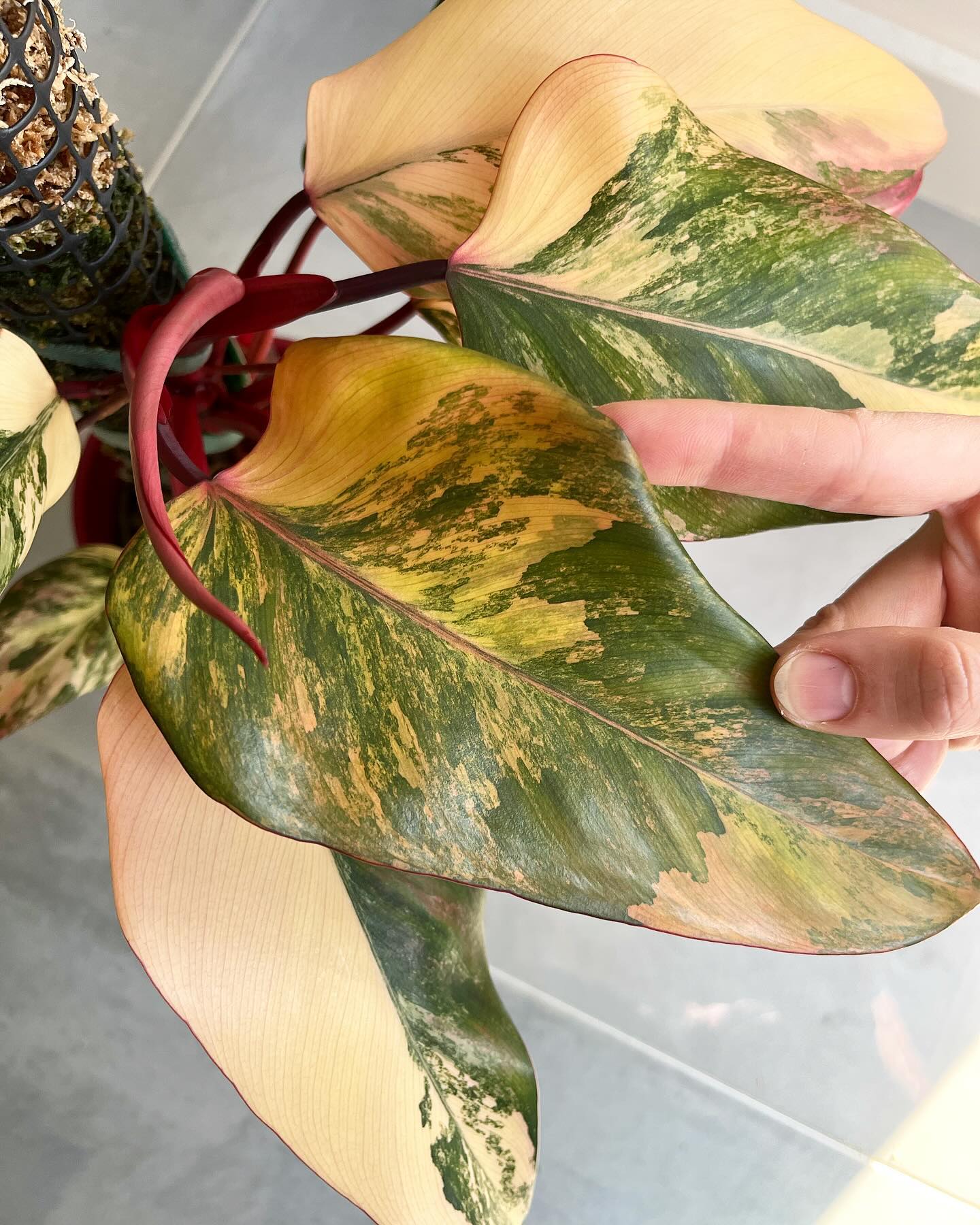Basic Information
Exploring the details of taking care of a Philodendron Strawberry Shake can be a gratifying pursuit for plant lovers. This plant, famous for its remarkable variegated leaves, demands a little extra attention to grow vigorously. Let’s take a closer look at each aspect of its care:



Light
Philodendron Strawberry Shake thrives in bright, indirect light. It is crucial for the plant to receive sufficient light to maintain its variegation, but direct sunlight can harm its delicate leaves. The plant needs a balance of adequate light and shade, with a preference for a well-lit area that doesn’t cast harsh shadows. This lighting condition helps preserve the vibrant coloration of its leaves without risking sunburn. For indoor settings, it is best to place it near east or west-facing windows that are filtered through sheer curtains.
Water
In order to water the Strawberry Shake plant, it is recommended to wait until the top 2 inches of soil have dried out. It is crucial to balance the moisture level in the soil to prevent both over and under-watering. You can achieve this balance by ensuring that the soil is neither too wet nor too dry. Checking soil moisture regularly using either your finger or a moisture meter can help you maintain this balance. This careful balance is important to prevent root rot and ensure the roots have access to the moisture they need to remain healthy.
Soil
The Philodendron Strawberry Shake plant thrives in soil that is well-draining and rich in organic matter. An ideal soil mix for this plant should include approximately 10% perlite, 20% peat, 30% potting soil, and 40% bark. This composition helps to retain adequate moisture while also allowing for proper drainage, ensuring that the plant’s roots receive the necessary water without the risk of waterlogging. The soil’s ability to drain excess water while holding onto the right amount of moisture is essential for the plant’s overall health.
Temperature
This particular plant grows best in a temperature range of 55°F to 80°F. It can be grown both indoors and outdoors. Although it can withstand higher temperatures of up to 95°F, it is sensitive to cold and temperatures below 55°F can be harmful. To keep the plant healthy, it is essential to maintain a stable temperature within this range. Sudden fluctuations in temperature or exposure to cold drafts can be detrimental to its health.
Humidity
Philodendron Strawberry Shake thrives in a humid environment, with an ideal humidity level between 60% to 70%. This level of humidity promotes the plant’s health and growth, resulting in brighter leaf coloration and more robust foliage. Although the plant can tolerate lower humidity levels, providing a humid environment through the use of humidifiers, grouping with other plants, or using a pebble tray can significantly benefit this tropical plant.
Fertilizer
It’s recommended to fertilize your plants once a month during the growing season using a balanced liquid fertilizer that has been diluted. When the plant’s growth slows down in late fall and winter, you should reduce the frequency of fertilization. Over-fertilization can harm your plants by causing leaf burn or root damage. Therefore, it’s crucial to follow the instructions carefully and look out for signs like yellowing or burnt leaf edges, which are indications of over-fertilization.
Growth Rate
The Philodendron Strawberry Shake grows at a moderate rate. During its juvenile stage, it requires more frequent repotting, but as it matures, this can be done less often – usually every 2-3 years. The plant’s growth patterns may vary depending on the care it receives and its environment. Repotting it on this schedule provides enough space for growth without becoming root-bound, which can negatively affect its health and growth.
Pet Safety
Contains calcium oxalate crystals which are toxic to humans and pets. Ingestion may cause pain, swelling, and gastrointestinal issues.
Grow in Semi-Hydro
- Philodendrons, celebrated for their lush foliage and adaptability, thrive in semi-hydroponic systems such as LECA/Pon, thanks to their resilient root systems and preference for consistent moisture.
- Shifting a Philodendron to a semi-hydroponic setting works well using a Nutrient Stagnant Wicking (NSW) method, providing a stable and effective environment for growth.
- Within the LECA/Pon environment, Philodendron roots adapt swiftly, effectively managing any early challenges in adapting to the NSW system.
- For nourishing Philodendrons in semi-hydro systems, a nutrient solution with a concentration around 800-1000ppm is optimal.
- Philodendrons are versatile in adapting to a range of temperature and humidity levels, making them ideal for various indoor settings.
- Regular care involves monitoring the reservoir’s water level and periodically flushing the system to ensure the Philodendron’s healthy and consistent growth.
- If your Philodendron is a climber, it’s a must to look at our Moss Pole guide to have a proper set-up.
Tips
- Pruning: Regular pruning promotes healthy growth and maintains shape.
- Propagation: Best propagated via stem cuttings, air layering, or division.
- Pest Management: Look for signs of pests like spider mites, mealybugs, and aphids.
- Disease Prevention: Avoid wetting foliage and ensure good air circulation.
- Handling Variegation: Monitor light levels to maintain variegation.
- Troubleshooting Tips: Yellow leaves may indicate overwatering or nutrient deficiency.
To ensure the healthy growth and stunning display of your rare and beautiful Philodendron Strawberry Shake houseplant, it is important to pay close attention to its care. Regular observation and slight adjustments in care can make a significant difference in the plant’s overall health and appearance. So, make sure to take good care of your plant by following these aspects of its care.
Happy planting! 🌱


